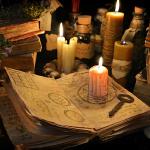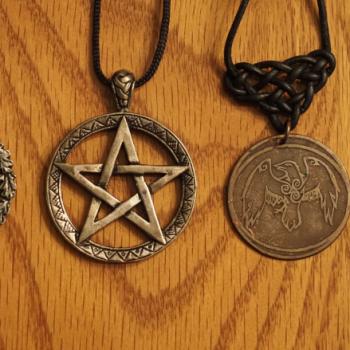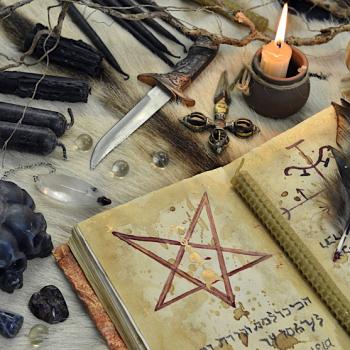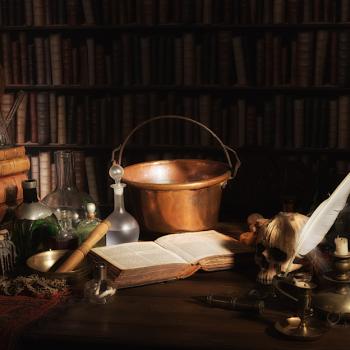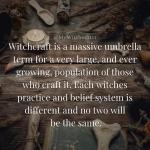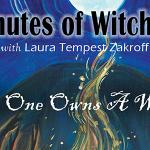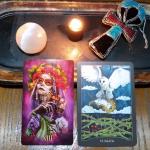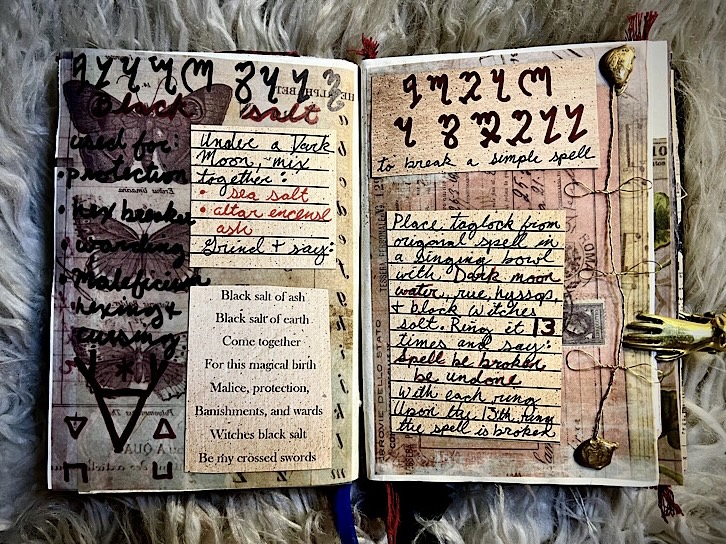
It’s 1998. I’m 12 years old and watching Practical Magic for the first time. It’s the first 15 minutes of the movie and the Aunts are looking through a big old black tome. Not just a tome, but a double sided grimoire that’s been in their family for centuries. The pictures were old. The writing is swirly, slanted cursive, and the pages are colored with age. I was mesmerized. It was the epitome of the witches spellbook, the family grimoire of my dreams.
But where does one begin when creating this book? How does one start? Is a book of shadows the same thing? What if I mess up or my practice changes? Many of us practitioners will buy that big beautiful expensive blank book and be terrified to write in it. So let’s talk about some creative ideas and solutions for building your own grimoire.

Setting up your Book Base
First of all, it’s important to decide in advance what the base of your book will be.
Adjustable:
-binder
-expandable scrapbook
Non-adjustable:
-journal
-notebook
-junk journal/paste over method
If you feel as tho you want to have the freedom to add and remove pages, a binder or expandable scrapbook is best because pages can be moved around, page protectors can be used, and you can always add more paper if you run out of space or you need to size up.
If you want a prebound book, it might be a bit more important to plan out the book contents in advance.
Book of Shadows vs Grimoires
One of the main community generalities around personal books of magic is the distinction between a Grimoire and a Book of Shadows. A BOS is more of a journal recording your magical journey, your trials and tribulations. A Grimoire is more like a settled book of magic, spirit lists, spells, rituals, and rites. And to be truly honest, what you call your book isn’t as important as what’s in it.
Outline your Book
A wise witch might consider outlining their themes and pages in advance. The most important and frequently used aspects should go in the beginning: opening evocations/invocations, creation of tools, and base recipes one might need for future workings. After this, more specific recipes and spells might go next. It’s important that if a spell requires moon water or black salt that you put those recipes first so it’s clear how to create any needed ingredients.
With a binder or expandable scrapbook, this is less important because you can move things around, add more later, etc, but in a bound book, planning ahead is key. Next, decide if you want your book to be in black and white or color. Do you want to color code certain parts? Ex. Spell instructions in black and incantations in red. Do you want to separate the beneficial and sinistral workings or do you want them all mixed together with the benefic spells in red and baneful spells in black? The choice is yours.
And lastly, do you have a collection of spirits you work with? Making a separate section with their names, sigils, and responsible virtues would help in organizing your Grimoire similarly to the Keys of Solomon or The Black Pullet.
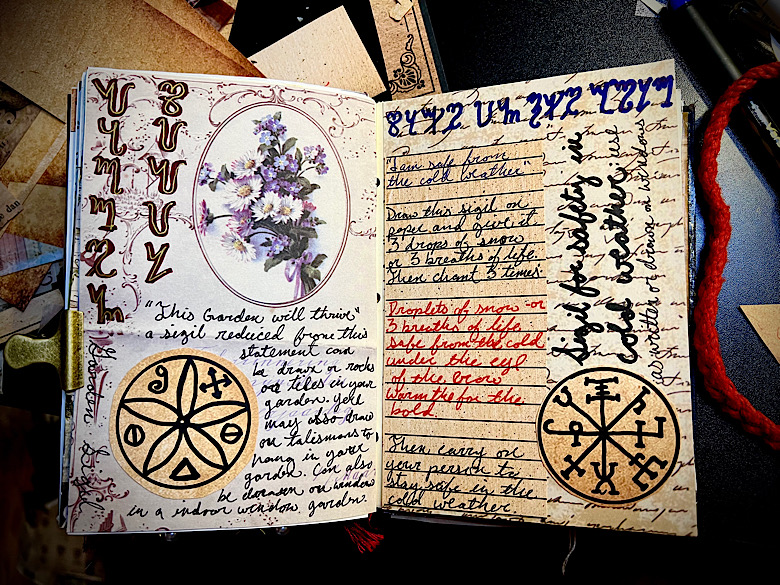
A Personal Example
In my grimoire, I have my monthly rituals followed by some important tool blessings, recipes, and creations. Then it gets into benefic spells and charms after that. If one were to flip over the book and turn it upside down, it would open to the baneful section of my book with a collection of more sinistral magical rites.
This isn’t a journal. It’s not a diary. It’s not a place to write my thoughts or experiences. It’s a book designated for the “how-to” part of my craft. If it were to be passed on in my family, it could be followed by my descendants.
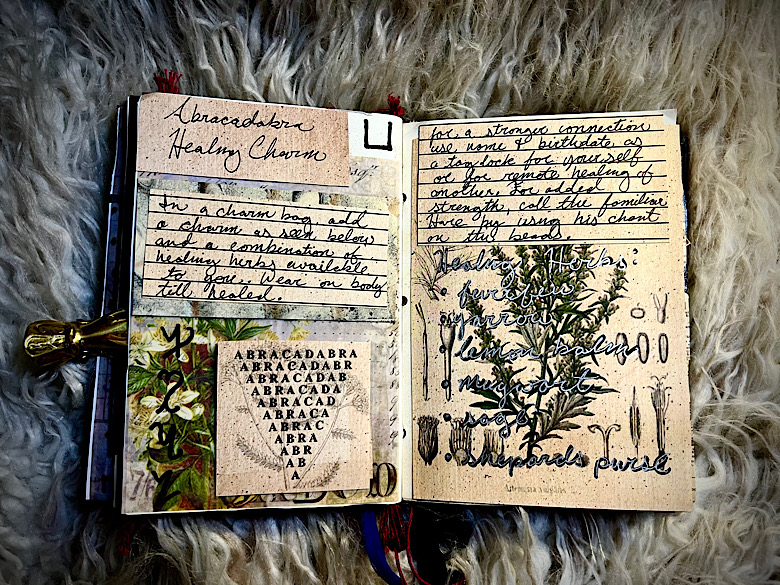
As a witch inspired by Practical Magic, I chose the paste-over method to build my Grimoire. I found an old rebound journal from an artist who rebinds books that were being recycled. I suggest checking out Half Price Books for cheap old books to use or use the expandable scrapbook method for this. I purchased scrapbook paper, card stock, stickers, modern velum, black lined notebook paper, colored pens, glue sticks and double sided tape.
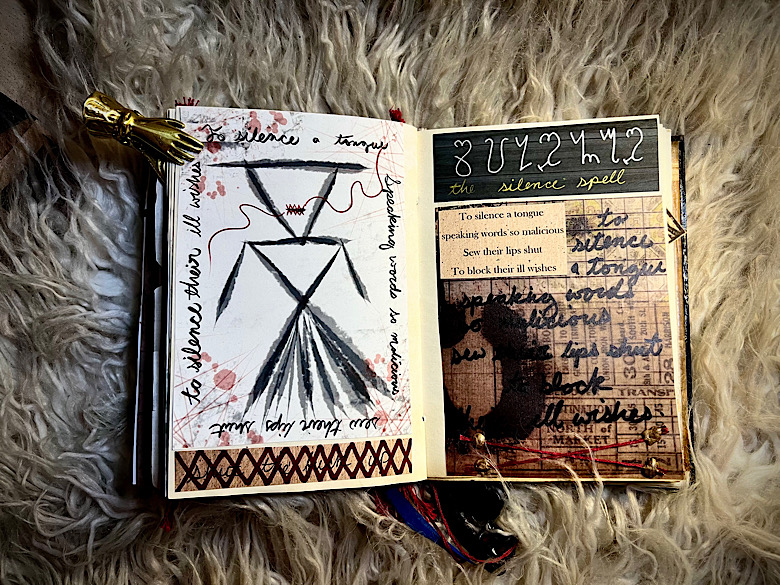
Once my tools were gathered, I laid out how I wanted my book to be formatted and cut my scrapbook paper to fit the page. I used Word to print off important instructions and incantations so they would be bold and legible by candlelight (tiny slanted cursive in a dark room makes me an unhappy witch). I used a mix of color and themes the individual workings were inspired by on each page. I also use theban “the witches alphabet”, in many titles while still writing the translation below it for clarity. Is theban, or any secret language, necessary? Not at all, but I’m an aesthetic queer so I go all out.
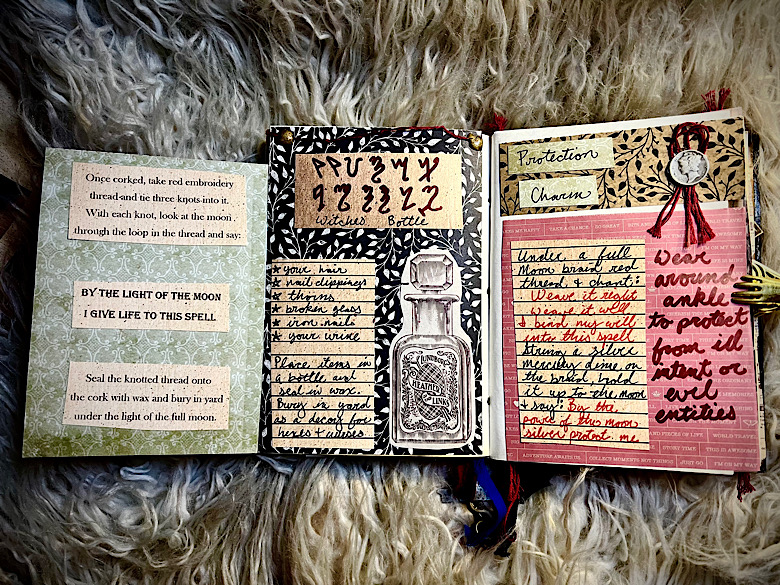
I also pasted in fold-outs on card stock and envelopes to create pockets. This allowed for expandable pages for more involved workings or premade sigils and seals. By doing this, i now have many of the tools I may need already in my book. It also gives me the opportunity to add more to a ritual or working when I may have forgotten something important.
Good Mistakes
At this point it’s import to talk about mistakes. How do we not cock it up? This is where early preparation is key. Having that outline, printing out your words, or writing incantations and instructions on lined paper and pasting it in, ect. I made many mistakes when creating my Grimoire, but because I pasted everything in after writing on scrap paper or card stock, if I messed up, I just started over and perfected it before taping/pasting it in. I also found I used double sided tape way more than glue as it didn’t wet the paper and it was easier to peel off if the tape hadn’t fully settled yet.
But let’s be truly honest. If you decide to go the hand written method, mistakes are human and in my opinion, add to the beauty of a book of magic. Cross it out and keep going. My first grimoire is riddled with scribbles and lines through misspelled words. It’s ok. Our mistakes are part of us and so is the magic in our personally created books.
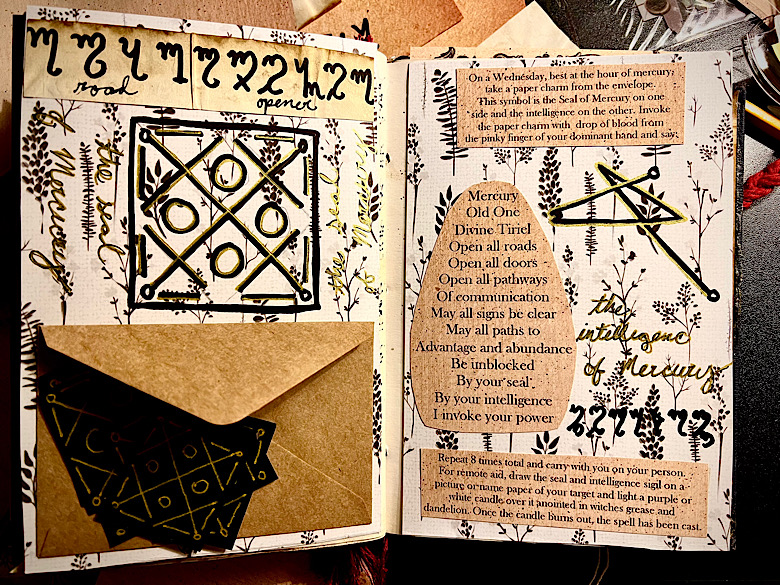
Embrace your magic. Embrace your mistakes as part of the growing process. Embrace your level of creativity no matter where it falls. And never compare your books with someone else’s. I guarantee you, you have something amazing that exists nowhere else in the world but your grimoire.
From the Crossroads of Texas,
Marshall WSL



